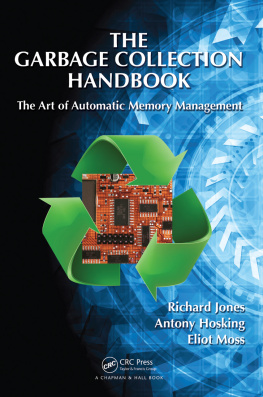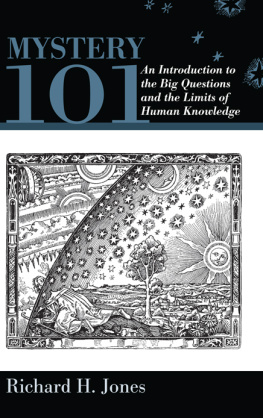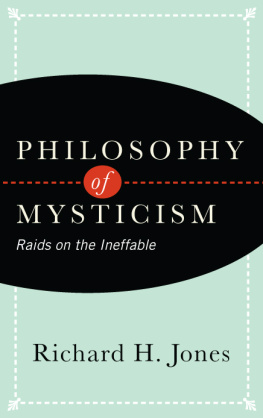Richard Jones - The Little Book of Nits
Here you can read online Richard Jones - The Little Book of Nits full text of the book (entire story) in english for free. Download pdf and epub, get meaning, cover and reviews about this ebook. year: 2012, publisher: Bloomsbury Publishing, genre: Children. Description of the work, (preface) as well as reviews are available. Best literature library LitArk.com created for fans of good reading and offers a wide selection of genres:
Romance novel
Science fiction
Adventure
Detective
Science
History
Home and family
Prose
Art
Politics
Computer
Non-fiction
Religion
Business
Children
Humor
Choose a favorite category and find really read worthwhile books. Enjoy immersion in the world of imagination, feel the emotions of the characters or learn something new for yourself, make an fascinating discovery.

- Book:The Little Book of Nits
- Author:
- Publisher:Bloomsbury Publishing
- Genre:
- Year:2012
- Rating:4 / 5
- Favourites:Add to favourites
- Your mark:
- 80
- 1
- 2
- 3
- 4
- 5
The Little Book of Nits: summary, description and annotation
We offer to read an annotation, description, summary or preface (depends on what the author of the book "The Little Book of Nits" wrote himself). If you haven't found the necessary information about the book — write in the comments, we will try to find it.
The Little Book of Nits — read online for free the complete book (whole text) full work
Below is the text of the book, divided by pages. System saving the place of the last page read, allows you to conveniently read the book "The Little Book of Nits" online for free, without having to search again every time where you left off. Put a bookmark, and you can go to the page where you finished reading at any time.
Font size:
Interval:
Bookmark:
Finally, wed like to thank: Rebecca Palmer ( www.bepalmer.blogspot.com ) for the excellent cartoons on pages 20, 28, 44, 58, 64 and 82; Sadie Hennessy ( www.sadiehennessy.co.uk ) for the nit magnet postcard on page 32; Kirsty Gordon for the nit knitting pattern on page 118 and the children of Ivydale Primary School, Natural History Club, for the drawings on page 98, and Franck Cassedanne and Lukas Schwimann, who advised on the translations on pages 901
Artwork
Contents, ElenaMaria/Shutterstock; 9, Robert Hooke/Wiki Media; 10, Susan McIntyre; 19, Francesco Abrignani/Shutterstock; 20, Rebecca Palmer; 22, head louse3drenderings/Shutterstock; 28, Rebecca Palmer; 32, Sadie Hennessy; 38, head louse3drenderings/Shutterstock; 40, head louse3drenderings/Shutterstock; 42, lian_2011/Shutterstock; 44, Rebecca Palmer; 50, Glenn Kershner/Shutterstock; 57, Morphart/Shutterstock; 58, Rebecca Palmer; 64, Rebecca Palmer; 68, head louse3drenderings/Shutterstock; 70, Accent/Shutterstock; 7475, combSusan McIntyre; 76, dmiskv/Shutterstock; 82, Rebecca Palmer; 86, advent/Shutterstock; 9091 Leremy/Shutterstock; 92, Susan McIntyre; 98, Ivydale Primary School; 102, Thank You/Shutterstock; 110 left and middle, AKaiser/Shutterstock; 110 right, jumpingsack/Shutterstock; 116, Rebecca Palmer.
Photographs
11, Mauro Rodrigues/Shutterstock; 22, nymphKevinDyer/iStockphoto; 22, nit combRichard Jones and Justine Crow; 24, marekuliasz/Shutterstock; 38, Tristan3D/Shutterstock; 40, Costas/Shutterstock; 48, RetroClipArt/Shutterstock; 52, Richard Jones and Justine Crow; 60, Africa Studio/Shutterstock; 61, Margrit Hirsch/Shutterstock; 62, Lukiyanova Natalia / frenta/Shutterstock; 72, Richard Jones and Justine Crow; 80, KevinDyer/iStockphoto; 100, Richard Jones and Justine Crow; 104, rorem/Shutterstock; 119, Richard Jones and Justine Crow; 123, KevinDyer/iStockphoto.

its not a monster
O h dear . One of the children has come home from school with the usual head louse letter. It may be helpful and suggest all manner of preparations and treatments to get rid of the blighters. Or it might accuse you of being a bad parent and endangering the health, safety and good name of the school. Whatever. DONT PANIC!
Much of what you know, or think you know, about head lice is going to be wrong. There are so many quack cures and old wives tales that sorting fact from fiction is sometimes very difficult.
But congratulations, you have taken the right first step in picking up this little book. Its time to start getting our facts straight.
First, head lice are very common. They are particularly common amongst schoolchildren. Rough estimates suggest that almost 40% of children will get head lice at some point between the ages of three and ten.
Second, they are easy to catch  almost as easy as catching a cold. Anyone from presidents to paupers can catch a cold, and they can get head lice, too.
almost as easy as catching a cold. Anyone from presidents to paupers can catch a cold, and they can get head lice, too.
Third, head lice are not choosy about whose head they infest. From baker to barrister, we can all get head lice; even entomologists get head lice.
Lastly, they can be got rid of.
We take care not to peddle any particular product with this book. And we distance ourselves from anyone else promoting particular potions, poisons or gadgets. But there is only one sure-fire way of ridding yourselves and your families of head lice. That is to understand what these tiny critters are, how they live, how they breed and how they move about.
Then you can set about removing them
Muddled

James, (aged six) on his way home from school: Mum, I had a letter from the teacher to give you, but I lost it.
Edwina: Oh! What did it say?
James: It said you have to look in my hair for woodlice.
J ames can be forgiven his childish muddle. Louse is an old word and its used for all sorts of small, mean, crawling creatures. Apart from woodlice the familiar, domed crustaceans living under logs in the garden there are hoglice (water woodlice), fish-lice (flat prawn-like fish parasites), plant-lice (a bit like greenflies), bark-lice (a bit like greenflies on tree trunks), booklice (inhabitants of old books) and, of course, head lice.
Its some of the grown-up muddles we have to be careful of, though. Despite the fact that head lice have been with us since prehistory, and weve had plenty of time to learn all about them, there is still much to discover and still a huge amount of myth and misinformation spread around. Even authoritative information dished out by doctors, government departments, schools, education authorities and (sorry, guys) entomologists is often littered with errors.
Head lice are a bit annoying  but if they come into your life, you do not have to worry about disinfecting combs and hairbrushes; you will not have to shampoo the carpets or bath the dog; you should not feel dirty or diseased; you should not be embarrassed or feel unlucky. You just need to discover a few basic facts, and getting rid of them will then be all the easier.
but if they come into your life, you do not have to worry about disinfecting combs and hairbrushes; you will not have to shampoo the carpets or bath the dog; you should not feel dirty or diseased; you should not be embarrassed or feel unlucky. You just need to discover a few basic facts, and getting rid of them will then be all the easier.
One easy muddle, to start with, is over the terms nit and louse. In general conversation, the two words are used interchangeably. And sometimes thats OK. But when someone like a teacher, a nurse, a doctor or an entomologist starts explaining how to get rid of them, it becomes very important to know that the two are, in fact, very different. And neither is anything to do with woodlice.
A nit is a louse egg. More particularly, it is an empty louse egg-shell, because by the time the nit is spotted, the tiny louseling has hatched out and crawled off across the scalp. Strictly speaking, an egg with a louse embryo still inside does not have its own name, but lets not split hairs over this (or the nits attached to them).
A nit is tiny. At 0.8 by 0.3mm, its about the size of the full stop at the end of this sentence. To put a nit in perspective, a hens egg is over one and a half million times the size, a goose egg is four million times as big and an ostrich egg should you have one lying about in the kitchen is 43 million times the size of a nit.
The louse egg is smooth, sleek and shaped like a rugby ball. It has a broad rimmed neck and a flip-top lid (the operculum), which has about 16 small holes, through which the developing louse embryo breathes.
It takes about a week from egg laying to louse hatching. The optimum temperature for development is 31C, which is coincidentally very similar to the usual scalp temperature of 33C. Louse eggs do not hatch below 22C. Unfortunately, unless you sleep with your head in the fridge, there is no way you can get your scalp down to this temperature.
Oddly, the lid is not quite big enough for the louse hatchling to climb through. Instead, it starts swallowing down air and expelling it at the other end, inside the base of the eggshell. This builds up pressure inside the nit, enough to push out the louse like a cork from a champagne bottle.
There is no pop and no airborne trajectory, but what a neat trick
Font size:
Interval:
Bookmark:
Similar books «The Little Book of Nits»
Look at similar books to The Little Book of Nits. We have selected literature similar in name and meaning in the hope of providing readers with more options to find new, interesting, not yet read works.
Discussion, reviews of the book The Little Book of Nits and just readers' own opinions. Leave your comments, write what you think about the work, its meaning or the main characters. Specify what exactly you liked and what you didn't like, and why you think so.










